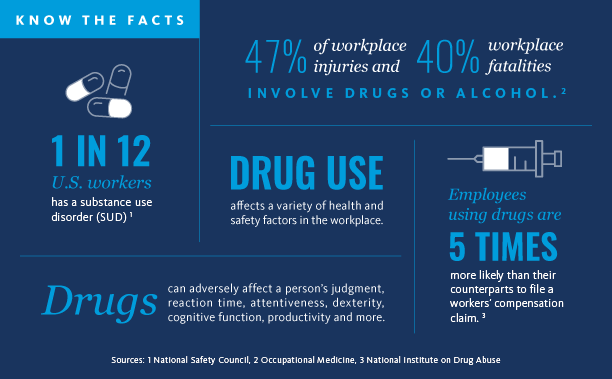The statistics regarding drug use among the American workforce are alarming. Drugs can adversely affect a person’s judgment, reaction time, attentiveness, dexterity, cognitive function, productivity and more. It’s not hard to imagine how an employee under the influence who experiences such impairments would be prone to making errors on the job. Employers across all industries are encouraged to understand the facts and consider a multipronged approach in addressing this complicated issue.

Research by the National Safety Council found that training people managers on impairment recognition and response helps to improve workers’ safety behaviors and control workers’ compensation costs. Keep in mind that all organizational protocols for reporting colleagues who appear impaired at work should be discreet, focused on safety, and driven by a sense of responsibility and empathy. Employers play a critical role in reducing the stigma around seeking help for a substance use disorder. In addition to the workplace safety element, employee education efforts should include information on available substance abuse and recovery support, whether through the employee health benefits, employee assistance program (EAP) or community-based resources.
Normalizing and promoting treatment for substance abuse is a win-win: it lowers employees’ long-term health care costs, reduces unscheduled absences from work, boosts workplace safety and productivity, curtails turnover, and, most importantly, demonstrates that caring counts.
> Learn more — read an extended version of this blog here, or contact Rich Wirth to explore how our experts can help your organization with drug-use policy development, employee training and other workplace safety initiatives